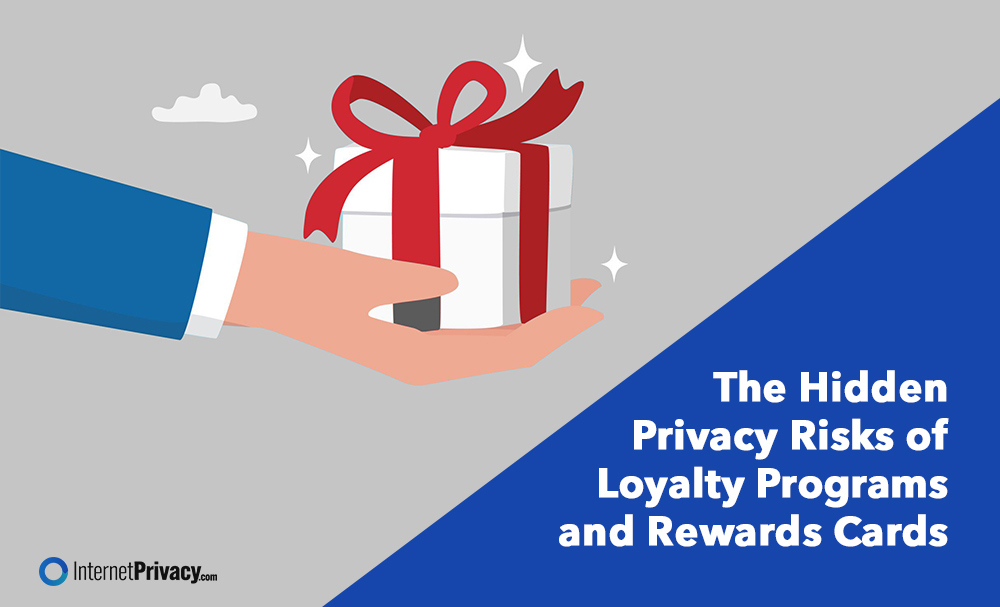The Hidden Privacy Risks of Loyalty Programs and Rewards Cards

Loyalty programs and rewards cards are powerful tools used by retailers, financial institutions, and hospitality brands to attract and retain customers. By offering discounts, exclusive deals, and personalized experiences, these programs incentivize repeat purchases and strengthen consumer trust. However, behind the convenience lies a significant trade-off: the extensive data collection and data processing activities involved.
While customers enjoy rewards, businesses leverage loyalty programs to track personal data, analyze shopping habits, and refine marketing strategies. This data processing helps companies optimize promotions and improve customer engagement, but it also raises concerns about privacy risks, data security, and compliance with data protection laws such as the General Data Protection Regulation (GDPR) and the California Consumer Privacy Act (CCPA).
How Loyalty Programs Work and Why Companies Use Them
Loyalty programs operate by rewarding customers for their continued business. This is achieved through various models, including:
- Point-Based Systems – Customers earn points based on purchases and redeem them for discounts, free products, or special perks.
- Tiered Memberships – Programs like Hilton Honors or American Airlines AAdvantage provide increasing benefits as customers spend more.
- Cashback Offers – Some loyalty programs provide rebates or direct cash rewards based on spending activity.
- Subscription-Based Loyalty Programs – Certain retailers like Amazon Prime offer paid memberships with exclusive benefits, effectively monetizing customer loyalty.
While these models enhance customer experiences, they also require extensive data collection, often tracking:
- Purchase history and spending patterns.
- Email addresses, phone numbers, and demographic details for targeted marketing.
- Linked credit cards or payment methods for seamless transactions.
- Behavioral insights derived from mobile apps, website visits, and social media engagement.
This sensitive information enables businesses to personalize offers and increase sales. However, such data aggregation presents privacy risks, particularly when data handling is not transparent.
The Benefits of Loyalty Programs
For both businesses and consumers, loyalty programs create a mutually beneficial ecosystem:
Consumer Benefits:
- Cost Savings – Earn discounts, cashback, and free rewards.
- Personalized Shopping Experience – Receive promotions tailored to past purchases.
- Exclusive Perks – Access to member-only deals, early sales, or priority customer service.
- Convenience – Streamlined checkouts and one-click purchases.
Business Benefits:
- Increased Customer Retention – Repeat purchases generate long-term brand loyalty.
- Valuable Consumer Insights – Data processing activities help brands refine marketing strategies.
- Higher Sales & Engagement – Targeted incentives encourage customers to spend more.
- Competitive Edge – Strong loyalty programs differentiate businesses from competitors.
While these advantages drive profitability, the reliance on personal data brings forth security and legal compliance concerns.
Privacy Risks and Data Security Concerns
Loyalty programs collect vast amounts of sensitive data, raising privacy risks such as:
1. Extensive Data Collection and Processing
Many companies gather personal data beyond what is necessary for the program. Without clear privacy policies, consumers may not realize how their sensitive personal information is used, stored, or shared.
The General Data Protection Regulation (GDPR) and California Consumer Privacy Act (CCPA) require businesses to disclose data processing practices and allow users to opt-out. However, non-compliance remains a widespread issue, leading to legal consequences and potential fines.
2. Third-Party Data Sharing
Retailers, hospitality brands, and financial institutions often share loyalty program data with advertisers, cloud services, and data brokers. This means your personal data could be aggregated across multiple sources and used for targeted advertising without your explicit consent.
Some risks include:
- Social engineering attacks, where cybercriminals manipulate individuals into revealing private information.
- Identity theft, as leaked loyalty data can be exploited by malicious actors.
- Reputational damage if a company is caught misusing or selling customer data.
Businesses must implement data protection impact assessments to evaluate these risks and ensure regulatory compliance.
3. Data Breaches and Cybersecurity Threats
Loyalty databases store sensitive consumer details, making them prime targets for security incidents. High-profile data breaches have exposed millions of customer records, leading to fraudulent transactions and financial fraud.
Common security threats include:
- Insider threats, where employees misuse customer data.
- Hacking attempts exploiting weak encryption methods.
- Unauthorized access due to poor data protection measures.
Companies should prioritize strong encryption, incident response strategies, and training programs to mitigate these cybersecurity threats.
4. Lack of Transparency and Privacy Policies
Many businesses fail to properly inform data subjects about data processing activities. Consumers often sign up for loyalty programs without understanding:
- How long their personal data is retained.
- Whether it’s sold to third parties.
- What security safeguards are in place.
To build consumer trust, companies must ensure their privacy team enforces data privacy laws and privacy risk management programs.
How to Protect Your Privacy While Using Loyalty Programs
Consumers can take proactive steps to reduce privacy risks when using loyalty programs:
- Read Privacy Policies – Understand data handling and whether you can opt out of data sharing.
- Limit Access on Personal Devices – Use unique passwords and avoid linking accounts to multiple devices.
- Opt-Out of Data Sharing – Many programs allow users to disable tracking through privacy settings.
- Monitor Financial Accounts – Watch for unauthorized transactions or fraud.
- Use a Dedicated Email Address – Minimize spam and phishing risks by using a separate account for loyalty programs.
- Engage with Privacy Professionals – Seek guidance from a data protection officer or legal expert for concerns about privacy legislation.
Alternatives to Traditional Loyalty Programs
For privacy-conscious consumers, consider these alternatives:
- Cashback Programs – Services like Rakuten and Ibotta offer rebates without invasive data processing activities.
- Discount Codes & Coupons – Many retailers provide promotions without requiring a loyalty account.
- General Rewards Credit Cards – Unlike store-specific programs, these cards provide universal rewards while reducing data privacy risks.
Final Thoughts
Loyalty programs offer undeniable value but come with privacy risks if data protection measures are not properly enforced. Consumers should remain vigilant about data privacy, security risks, and legal compliance when sharing personal details with businesses.
By understanding privacy legislation, reviewing privacy policies, and opting out of unnecessary data collection, consumers can enjoy rewards while minimizing privacy risks. If data security is a top priority, alternative reward programs may be a better fit.
As the world increasingly relies on artificial intelligence, mobile apps, and cloud services, businesses must prioritize data protection, incident management, and privacy risk management programs to maintain consumer trust and uphold privacy laws.





